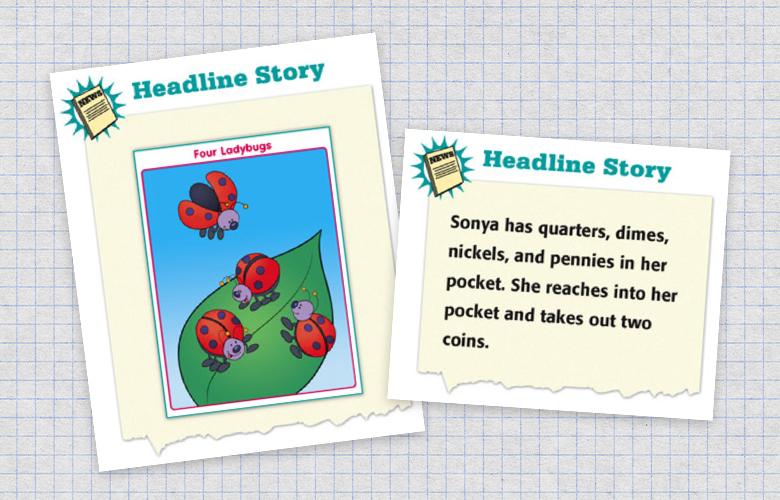
- How can I get children to talk about math, whether in-person or online?
- What resources are available to help children make sense of mathematical situations?
I commonly hear these types of questions from teachers who are understandably concerned about how to foster rich discussions of mathematics concepts and problem-solving at home, in school, or in a hybrid or virtual environment. That’s where Headline Stories can help!
Headline Stories, from EDC’s K–5 curriculum Think Math!, are discussion prompts that use images and short scenarios to promote mathematical conversation and flexible thinking. Put simply, Headline Stories are similar to headlines in a newspaper—they give some context (but no “answer”) and leave you wanting more. They give students experience with understanding, visualizing, and interpreting a scenario or image, offering multiple entry points. Teachers can use them to promote discussion in a virtual classroom by sharing their screens. Families supporting children’s learning at home can also use Headline Stories as math conversation starters.
To get a conversation flowing, show students an image or read them a short story and ask a few simple prompts:
- What do you know?
- What might you not know?
- What is possible? Impossible?
- What question could you ask?
A kindergartener might look at a picture of 4 ladybugs and notice that there are 3 lady bugs standing on a leaf and 1 flying in the air. After listening to Sonya’s story, a third-grader guesses at the possible combinations of the two coins Sonya pulls out of her pocket. Even in a remote setting, students can share their thinking aloud or type their responses into a chat box—and these prompts will give them something meaningful to talk about.
We have over 700 Headline Stories you can draw upon—or you can make up your own. Headline Stories are intended to be brief. A quick 5- to 10-minute conversation is all that is needed, making it doable for teachers and families to integrate them into their daily routines.
In the words of one elementary math teacher, “Headline Stories invite learners to explore possibilities, create solutions, and think like mathematicians.” Regardless of what learning environment—in person or virtual—you use them in, children are bound to enjoy engaging in math conversations and, in the process, build their ability to think mathematically.
Do you have ideas of how to start math conversations with your students or children? Please share below.
| Kate Coleman, an expert in elementary mathematics, has over 15 years of experience in designing innovative and effective curricula, assessments, and professional development. |


Comments
Add new comment